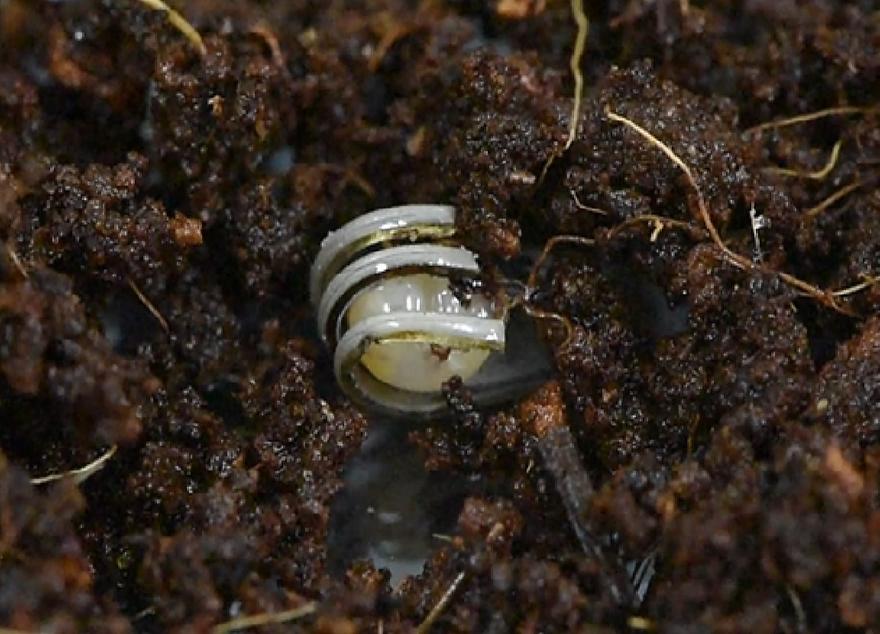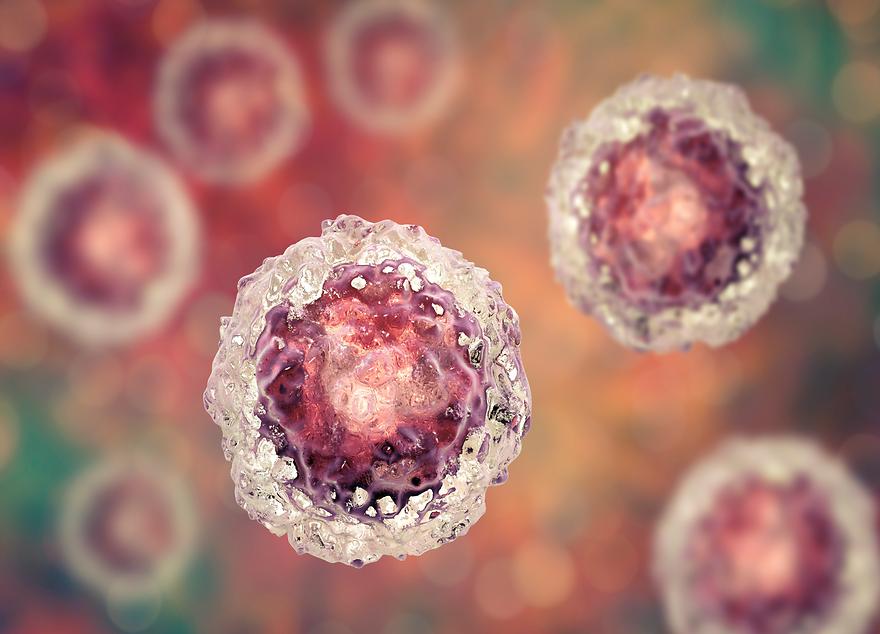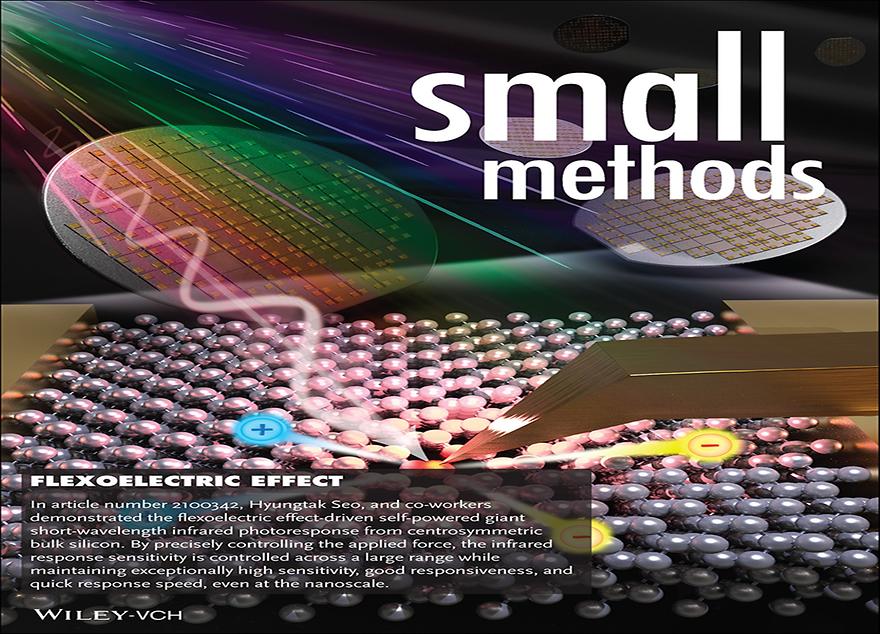-
Scientists have proposed a new way to describe electron movement in a unique type of solid system, enabling them to easily access their magnetic propertiesRecent research in the field of condensed matter physics has focused on “flat band systems,“ a source of intriguing electronic phenomena, such as superconductivity and magnetism. In a new study, researchers have proposed a new method of describing electron movement in “isolated flat bands (IFB),“ paving the way towards the design of novel quantum devices with customized magnetic responses. The new study reveals one of the underlying physical phenomena behind flat band systems and proposes a method to describe their wave function geometry. Image courtesy: Shutterstock.Flat band systems are a unique class of solid systems in which elect rons have infinite mass, i.e., they are hardly moving. The movement of electrons is described mathematically in the form of a “wave function.” The geometry of these wave functions is central to the description of condensed matter. Traditionally, wave function geometry is described by examining Landau levels (discrete energy levels for electrons that determine magnetic responses) using an approach called “Onsager’s semiclassical quantization rule.” But this approach cannot be applied to systems exhibiting “anomalous Landau levels.“ In a new study, published in Nature Communications, a team of scientists, including Assistant Professor Dr. Jun-Won Rhim of Ajou University, Korea, have proposed a new class of flat band systems with anomalous Landau levels. “Electrons in flat bands are not expected to respond to applied magnetic fields due to their infinite mass. However, we found that the electrons can move according to the quantum mechanical principle and that wave function geometry plays a vital role in this,” says Dr. Rhim.In their study, the researchers considered an “isolated flat band (IFB),” i.e. a flat band that is separated from other bands by a gap. The traditional Onsager approach does not apply to flat band systems because there are many electronic orbits for which Onsager’s quantization cannot be uniquely determined. The researchers instead used a “cross-gap Berry connection” to describe wave function geometry. According to Dr. Rhim, “IFBs are unbounded by the original band structure at zero magnetic field but are developed in the band gaps on either side of the flat band. The cross-gap Berry connection is a multi-band extension of the conventional Abelian Berry connection that helps describe inter-band couplings.”This is the first study to show how cross-gap Berry connections can affect physical properties in flat band systems. These results could prove crucial to the description and study of magnetic responses in solids. Better yet, these ideas can be applied in reverse to control wave function geometry in solids to design novel quantum devices with tunable magnetic responses.ReferenceAuthors:Yoonseok Hwang1,2,3, Jun-Won Rhim 1,2,4,* & Bohm-Jung Yang1,2,3,*Title of original paper:Geometric characterization of anomalous Landaulevels of isolated flat bandsJournal:Nature CommunicationsDOI:https://doi.org/10.1038/s41467-021-26765-z Affiliations:1 Center for Correlated Electron Systems, Institute for Basic Science (IBS), Korea. 2 Department of Physics and Astronomy, Seoul National University, Korea 3 Center for Theoretical Physics (CTP), Seoul National University, Korea 4 Department of Physics, Ajou University, Korea*Corresponding author’s email: jwrhim@ajou.ac.kr; bjyang@snu.ac.kr About Ajou UniversityFounded in 1973, Ajou University has quickly grown to become one of the top universities in the Republic of Korea. With over 15,000 students and 50 research centers in diverse fields, Ajou University partakes in the largest national research and graduate education project funded by the Korean Ministry of Education. In line with its recently reformed vision, Ajou University’s goal is to change society by connecting minds and carrying out high-impact research to improve the welfare of people in and outside Korea. Website: https://www.ajou.ac.kr/en/index.do About the authorDr. Jun Won Rhim is an Assistant Professor of the Department of Physics at Ajou University. His group is studying condensed matter physics theoretically. Before coming to Ajou University, he received his PhD in Physics from Yonsei University in 2011 and completed postdoctoral trainings at Korea Institute for Advanced Study, Korea, Max-Planck Institute for the Physics of Complex Systems, Germany and Seoul National University, Korea.
-
45
- 작성자국제교류팀
- 작성일2022-01-12
- 6889
- 동영상동영상
-
Inspired by human fingers, researchers develop a millimeter-scale, multifunctional soft gripper capable of bidirectional sensing and heavy liftingDevices that allow firm grasping of soft tissues without damaging them are essential for robotic handling of living organisms. However, to mimic human fingers effectively, they need to be equipped with bidirectional sensing and high payload capacity. Using a shape memory material, researchers from Korea have now developed a miniature soft gripper that meets these requirements, with high sensitivity towards mechanical and thermal stimuli, opening doors to wide applications in biomedical engineering.Shaped like the human hand, a new, miniature soft gripper device developed by researchers in Korea can lift heavy objects and grasp living organisms at the microscale. Photo courtesy: Seungyong Han from Ajou UniversityMimicking the human hand is an important frontier in human-robot interaction research. Artificial soft grippers—hand-like sensing devices for gentle manipulation of soft objects—have found applications in several areas, including drug delivery, noninvasive biopsy, and shape detection. However, these devices are often bulky, lack multiple functionalities and cannot handle heavy objects. Moreover, they cannot interact bidirectionally, i.e., sense and respond to the object.To address this issue, researchers from Korea have now developed a millimeter-sized, multifunctional, lightweight soft gripper with five fingers that not only shows bidirectional interaction with organisms but can do so for both light and heavy organisms down to microscales. Their study, published in Science Robotics, demonstrates the utility of this miniature device—fashioned using a shape memory polymer —in handling soft, delicate tissues typical of living organisms. Prof. Seungyong Han from Ajou University, Korea, who led this study, explains, “The human hand has five fingers, which together enable delicate control and also act as important sensory organs. We wanted to develop a hand-like soft gripper with fingers to mimic the human hand and bridge the divide between humans and robots.”The soft gripper developed by Prof. Han and his team used silver nanowires that enabled mechanical control as well as thermal stimulation and monitoring of each finger. Additionally, a crack-based strain sensor integrated into the gripper offered high sensitivity to mechanical stimuli. They tested their device using snail eggs that are only 3 mm in size and extremely fragile. “Our gripper could not only handle the snail eggs but also provided warmth to promote hatching and even monitored the heart rate of the newborn snails,” comments Prof. Han, excited. “This confirmed that our miniaturized gripper could handle delicate biological tissues. Nevertheless, we also tested the device using other objects, such as metal washers, polystyrene balls, rigid caps, and salmon eggs,” he adds.This study—which represents cross-functional efforts across mechanical, electrical, material, and biomedical engineering—could have far-reaching applications in robotics and medicine for patient monitoring and treatment. “Our results demonstrate the potential of widespread utilities of soft gripper, especially in the development of conditional or closed-loop interfacing with microscale tissues and organisms,” speculates an optimistic Prof. Han.Some exciting consequences to look forward to! ReferenceAuthors:Yeonwook Roh1, Minho Kim1, Sang Min Won2, Daseul Lim1, Insic Hong1, Seunggon Lee1, Taewi Kim1, Changhwan Kim1, Doohoe Lee1, Sunghoon Im1, Gunhee Lee3, Dongjin Kim1, Dongwook Shin1, Dohyeon Gong1, Baekgyeom Kim1, Seongyeon Kim1, Sungyeong Kim1, Hyun Kuk Kim4, Bon-Kwon Koo5, Sungchul Seo6, Je-Sung Koh1, Daeshik Kang1, Seungyong Han1 Title of original paper:Vital signal sensing and manipulation of a microscale organ with a multifunctional soft gripper Journal:Science Robotics DOI:10.1126/scirobotics.abi6774 Affiliations:1Department of Mechanical Engineering, Ajou University, Multiscale Bio-inspired Technology Lab, Suwon 16499, Republic of Korea. 2Department of Electrical and Computer Engineering, Sungkyunkwan University, Suwon 16419, Republic of Korea. 3Department of Environment Machinery, Korea Institute of Machinery and Materials, Daejeon 34103, Republic of Korea. 4Department of Internal Medicine and Car- diovascular Center, Chosun University Hospital, University of Chosun College of Medicine, Gwangju 61453, Republic of Korea. 5Department of Internal Medicine and Cardiovascular Center, Seoul National University Hospital, Seoul 03080, Republic of Korea. 6Department of Environmental Health and Safety, EulJi University, Seoul 11759, Republic of Korea. *Corresponding author’s email: sy84han@ajou.ac.kr About Ajou UniversityFounded in 1973, Ajou University has quickly grown to become one of the top universities in the Republic of Korea. With over 15,000 students and 50 research centers in diverse fields, Ajou University partakes in the largest national research and graduate education project funded by the Korean Ministry of Education. In line with its recently reformed vision, Ajou University’s goal is to change society by connecting minds and carrying out high-impact research to improve the welfare of people in and outside Korea. Website: https://www.ajou.ac.kr/en/index.do About the authorSeungyong Han is currently an associate professor in the Mechanical Engineering department at Ajou University, Republic of Korea. He received his B.S. degree in Mechanical Engineering from Ajou University in 2010, and his combined M.S./Ph.D. degree from KAIST, Republic of Korea, in 2014. Before joining Ajou University, he worked as a post-doc at Seoul National University (2014-2015) and University of Illinois at Urbana-Champaign (2015-2017). His research has been concentrated on various nanomaterials and its application to flexible/stretchable biomedical devices.
-
43
- 작성자국제협력팀
- 작성일2021-11-30
- 8765
- 동영상동영상
-
Scientists delve into the use of biopolymers as binders to prevent soil erosion in dikes and support plant growthSeveral eco-friendly biological soil treatment approaches have recently been proposed and verified in the laboratory as effective soil improvement methods. However, their validation in field-scale studies is lacking. To this end, scientists in Korea test a new method for soil reinforcement using biopolymer-based binders, bridging the gap between laboratory-scale experiments and actual implementations on the field and paving the way for erosion mitigation, revegetation, and river ecosystem preservation.Both natural and artificial dikes provide critical protection against floods. In a new study, scientists from Korea have tested an environment friendly soil treatment method that can help these structures withstand erosion. Photo courtesy: Smeerjewegproducties on ShutterstockAmong the various dreadful consequences of climate change, increased rainfall and flooding pose the greatest threat to people living near rivers. It is, therefore, important for civil engineers to mitigate the progressive deterioration of levees (dikes), both natural and artificial, due to soil erosion. While levee structures can be strengthened in many different ways, the most common practice involves using cement as a soil binder—an approach that causes high CO2 emissions and further accelerates climate change. Fortunately, a more environmentally conscious strategy has been the focus of soil research lately: biopolymer-based soil treatment (BPST). Biopolymers refer to molecules excreted by certain microorganisms that can be effectively used as eco-friendly binders for strengthening and stabilizing soil. However, while scientists regard BPST as a promising approach, its potential has been limited to laboratory experiments, with few field-scale tests conducted to determine the best practices for field implementations.Against this backdrop, a team of scientists led by Dr. Ilhan Chang of Ajou University, Korea, set out to bridge the gap between lab and field performances of BPST. Their study is now published online in Construction and Building Materials. “The strongest motivation for my research was to replace the high CO2-emitting cement with the low carbon-emitting microbial biopolymers in geotechnical engineering,” says Dr. Chang.The researchers developed and tested a new BPST on-site spraying method in which soil from the target site was mixed with biopolymers and applied on to a levee. They compared different biopolymer combinations and on-site mixing parameters and checked if adding the dry biopolymers to the mixing tank was better or worse than adding them as a pre-hydrated solution. They found that the solution form led to a better quality when mixed previously at a mixed volume of 1 m3 for 20 minutes or longer.Besides providing protection against erosion caused by wind and water, BPST naturally promotes the growth of vegetation and helps plants survive under harsh conditions. Thus, it can be leveraged to reduce the amount of chemical additives used in revegetation practices. Excited about its prospects, Dr. Chang says, “We believe that the BPST technology could become an effective countermeasure against global land degradation and desertification issues, as well as a powerful tool in afforestation projects.” Let us hope further research efforts will unlock the true potential of BPST, both as a protective strategy against the forces of nature and as a means to create a greener tomorrow.ReferenceAuthors:Seunghwan Seo1, Minhyeong Lee2, Jooyoung Im2, Yeong-Man Kwon2, Moon-Kyung Chung1, Gye-Chun Cho2, and Ilhan Chang3,*Title of original paper:Site application of biopolymer-based soil treatment (BPST) for slope surface protection: in-situ wet-spraying method and strengthening effect verificationJournal:Construction and Building MaterialsDOI:10.1016/j.conbuildmat.2021.124983Affiliations:1Department of Geotechnical Engineering Research, Korea Institute of Civil Engineering and Building Technology2Department of Civil and Environmental Engineering, Korea Advanced Institute of Science and Technology3Department of Civil Systems Engineering, Ajou University*Corresponding author’s email: ilhanchang@ajou.ac.kr About Ajou UniversityFounded in 1973, Ajou University has quickly grown to become one of the top universities in the Republic of Korea. With over 15,000 students and 50 research centers in diverse fields, Ajou University partakes in the largest national research and graduate education project funded by the Korean Ministry of Education. In line with its recently reformed vision, Ajou University’s goal is to change society by connecting minds and carrying out high-impact research to improve the welfare of people in and outside Korea. Website: https://www.ajou.ac.kr/en/index.do About the authorDr. Ilhan Chang is an Associate Professor with the Department of Civil Systems Engineering at Ajou University, Republic of Korea. He earned his B.S., M.S., and Ph.D. degrees in Civil and Geotechnical Engineering from Korea Advanced Institute of Science and Technology (KAIST). Dr. Chang and his research group are mainly focusing on multi-disciplinary research for emerging geotechnical engineering subjects, including soil characterization, ground improvement, soil erosion and preservation, biopolymer-based soil treatment (BPST), biological/bio-inspired soil treatment, anti-desertification, hydro-geotechnical engineering, new civil engineering materials, and sustainable urban development.
-
41
- 작성자국제협력팀
- 작성일2021-10-27
- 9313
- 동영상동영상
-
Researchers suggest a novel treatment protocol for tissue damage using stem cells within the patient’s bodyDespite remarkable progress in tissue engineering and stem cell therapeutics, stem cell injection is fraught with risks of cancer and is too expensive and time-consuming to be viable. Now, researchers suggest a novel treatment strategy using stem cells within the body to repair damaged tissues. They develop a novel system to promote the migration of the stem cells to the site of injury, facilitating tissue repair without the challenges of external stem cell manipulation. Stem cells have the ability to regenerate and heal damaged tissues. In a new study, researchers from Korea developed a strategy to treat tissue damage using stem cells within the body, which is safer compared to the conventional protocol. Courtesy: Shutterstock.With the development of sophisticated treatment strategies for tissue injury over the past decades, tissue engineering has made great strides towards effective tissue repair. Stem cell therapy is one such promising recourse to treat tissue damage. However, it is expensive, time-consuming, and has several undesirable side effects such as cancer progression. A better strategy is, therefore, needed to treat diseases caused by tissue degeneration.An alternative approach is to use the “endogenous stem cells” within our body to repair tissues. These cells reside in specific niches in the body and migrate to the site of injury to replace the damaged tissue. The transport or migration of these cells is regulated by “chemoattractants” (substances that attract motile cells of a particular type) such as the peptide Substance P (SP). However, SP does not activate the required number of endogenous stem cells to fully regenerate damaged tissues, thereby limiting our body’s self-healing capability.In a recent study published in the journal Small, researchers led by Prof. Moon Suk Kim and Prof. Sangdun Choi from Ajou University, Korea, found ways to improve and sustain the migration rate of endogenous stem cells using molecular dynamics simulations. They modified SP to develop a novel chemoattractant (SP1) and together with VEGF-mimicking peptide (VP), a biologically active factor to promote blood vessel formation, loaded it onto a liquid C/H hydrogel consisting of chitosan (Ch) and hyaluronic acid (HA). The hydrogel provided the role of a scaffold and a delivery system to direct both the chemoattractant and the VP to the site of tissue damage, while the blood vessel formation sustained the migration. This “SP1-loaded C/H-VP hydrogel” system can be injected at the site of treatment. Prof. Kim elaborates: “The newly discovered SP1 has approximately two to three times higher migration-inducing ability than that of the existing SP.”The researchers are hopeful their findings will offer a more promising solution to treat tissue degeneration in the future. “Our study indicates that SP1-loaded C/H-VP hydrogels offer a promising strategy to enable endogenous stem cell therapy, which is mostly free of side-effects and, thus, much safer,” comments Prof. Choi.His vision may not be too far from being realized! ReferenceAuthors: Seung Hun Park1, Hyeon Jin Ju1, Yun Bae Ji1, Masaud Shah1, Byoung Hyun Min1, Hak Soo Choi2, Sangdun Choi1* and Moon Suk Kim1,3*Title of original paper: Endogenous Stem Cell-Based In Situ Tissue Regeneration Using Electrostatically Interactive Hydrogel with a Newly Discovered Substance P Analog and VEGF-Mimicking PeptideJournal: Small DOI: https://doi.org/10.1002/smll.202103244 Affiliations: 1 Ajou University, Korea.2 Massachusetts General Hospital and Harvard Medical School, USA3 Medipolymers Research Institute, Korea*Corresponding author’s email: sangdunchoi@ajou.ac.kr, moonskim@ajou.ac.kr, About Ajou UniversityFounded in 1973, Ajou University has quickly grown to become one of the top universities in the Republic of Korea. With over 15,000 students and 50 research centers in diverse fields, Ajou University partakes in the largest national research and graduate education project funded by the Korean Ministry of Education. In line with its recently reformed vision, Ajou University’s goal is to change society by connecting minds and carrying out high-impact research to improve the welfare of people in and outside Korea. Website: https://www.ajou.ac.kr/en/index.do About Prof. Moon Suk KimDr. Moon Suk Kim is a Professor of Department of Molecular Science and Technology at Ajou University and the founder of Medipolymer Co., Ltd. He works on biomaterials-mediated drug and gene delivery, tissue and regenerative medicine, from design and synthesis of new drug carriers to mechanistic studies for the identification of critical delivery barriers and their potential therapeutic applications in several diseases. He also works on the application of nanostructured biomaterials for regenerative medicine, particularly focused on understanding the cell-topography interactions and their applications for stem cell engineering. He has published 230 peer-reviewed research manuscripts and holds more than 60 issued patents.About Prof. Sangdun ChoiProf. Sangdun Choi is a Professor of Department of Molecular Science and Technology at Ajou University and the founder of S&K Therapeutics Co., Ltd. He is an accomplished scientist in the Toll-like receptor (TLR) biology. He has dedicated his life to the discovery of underlying mechanisms and development of TLRs‐targeting therapeutics, which are involved in multiple diseases. He has published more than 200 papers in this area and currently holds several patents, with many more being filed. He has been awarded many prizes including the Korean Academy of Sciences Award for his contributions to the field of immunology.
-
39
- 작성자국제협력팀
- 작성일2021-10-05
- 9258
- 동영상동영상
-
Researchers overcome the fundamental optical limit of silicon-based semiconductors by changing their charge transport behavior with mechanical strainOptical applications of silicon-based semiconductors are limited to visible and near-infrared wavelengths owing to the fundamental energy band gap in silicon. Now, researchers from Korea have extended the optical limits of silicon crystals utilizing the “flexoelectric effect”, which reduces the band gap, opening doors to novel applications of silicon-based sensors in the wider infrared regime. Researchers applied a precisely controlled force using a pointed tip to induce strain gradient in a single silicon crystal, breaking its spatial inversion symmetry and extending the infrared response beyond its fundamental limit.Courtesy: Wiley Online LibraryModern electronics is ruled by silicon. Yet, its potential applications remain limited to the field of optoelectronics because of its fundamental energy gap, which confines its ability to absorb light within a certain wavelength range, limiting optical applications to visible and near-infrared-range devices only. But is there way around this fundamental limit? In a recent study published in Small Methods, researchers from Ajou University, Republic of Korea, led by Prof. Hyungtak Seo, took up the challenge to reengineer the fundamental energy gap of silicon and extend its usability for infrared applications. In accomplishing this feat, they took the hint from a physical phenomenon called “flexoelectric effect.” Silicon crystals possess an inherent inversion symmetry which, when broken by applying mechanical strain, gives rise to a spontaneous electric polarization. This, in turn, changes the “effective mass” of the free charge carriers in silicon, modifying its energy gap. When illuminated by light, the strained flexoelectric silicon undergoes a rearrangement in their electronic configuration that alters its fundamental absorption limit, a phenomenon known as the “flexo-photovoltaic effect.” The researchers took advantage of this response to demonstrate the photon sensing abilities of a single silicon crystal far beyond its fundamental energy gap. Prof. Seo explains, “We extended the sensitivity and responsivity of the silicon crystal to far-infrared wavelengths by introducing an inhomogeneous strain in the crystal using a pointed tip.” Additionally, they conducted photoconductive atomic force microscopic measurements to shed light on the flexoelectric photoresponse of the material and its tunability.The findings of this breakthrough study open up the possibility of using silicon-based materials for optical applications in the infrared (IR) region. IR photodetectors play a very important role in our day-to-day lives, from process control and exploration in industries to drug and explosive detection at security and defense facilities. Currently, these detectors use gallium/arsenic photosensors, which are expensive and difficult to work with. In contrast, silicon-based sensors are not only highly malleable but also economically viable. “Improving the IR photoresponse of silicon could help us build eco-friendly and cost-effective sensors not only for the industries but also healthcare, transport, and weather monitoring facilities,” comments an optimistic Prof. Seo.In nature, symmetry may not always be desirable. Sometimes, it needs to be broken!ReferenceAuthors:Mohit Kumar, Jaeseong Lim, Ji-Yong Park, and Hyungtak Seo*Title of original paper:Controllable, Self-Powered, and High-Performance Short- Wavelength Infrared Photodetector Driven by Coupled Flexoelectricity and Strain EffectJournal:Small MethodsDOI:10.1002/smtd.202100342 Affiliations:Department of Energy Systems ResearchAjou University, Republic of Korea*Corresponding author’s email: hseo@ajou.ac.kr About Ajou UniversityFounded in 1973, Ajou University has quickly grown to become one of the top universities in the Republic of Korea. With over 15,000 students and 50 research centers in diverse fields, Ajou University partakes in the largest national research and graduate education project funded by the Korean Ministry of Education. In line with its recently reformed vision, Ajou University’s goal is to change society by connecting minds and carrying out high-impact research to improve the welfare of people in and outside Korea. Website: https://www.ajou.ac.kr/en/index.doAbout Professor Hyungtak SeoProf. Hyungtak Seo received a Ph.D. in 2008 from North Carolina State University, USA, and worked at Lawrence Berkeley National Laboratory until September 2011. Since 2011, he has been a Professor at Ajou University, where he is the PI of the Advanced Electronic & Energy Materials (AEEM) Laboratory. His current interests are in (i) fabricating nano-materials for solar cells and photocatalysis applications; (ii) designing materials/devices for next-generation integrated circuit neuromorphic devices; (iii) tuning the electronic properties of nanoscale semiconductors for electrical and energy applications; (iv) and analyzing the properties of functional materials via UPS, XPS, ellipsometry, etc.
-
37
- 작성자국제협력팀
- 작성일2021-08-26
- 9780
- 동영상동영상





